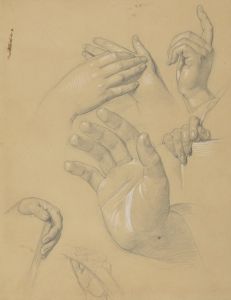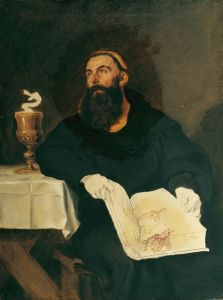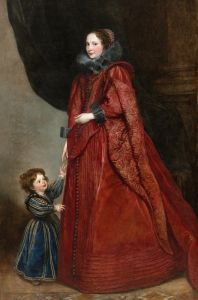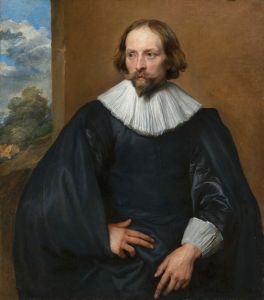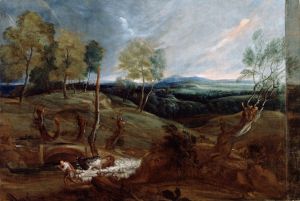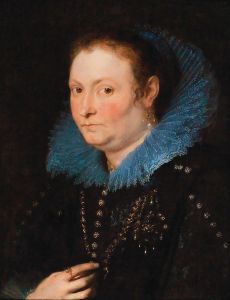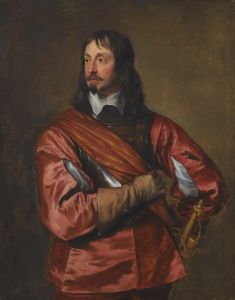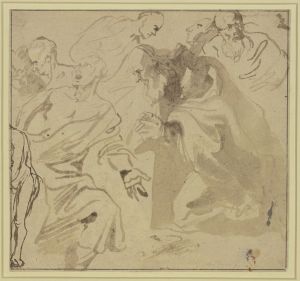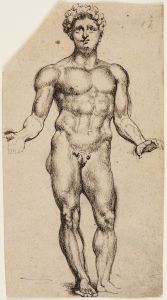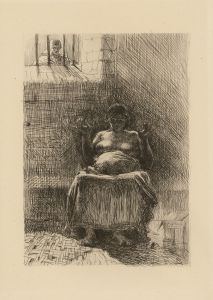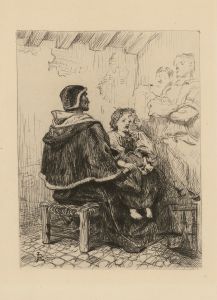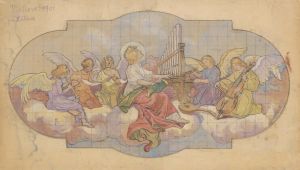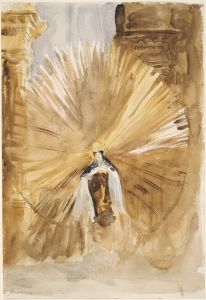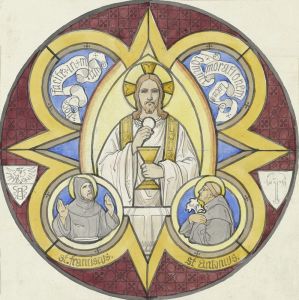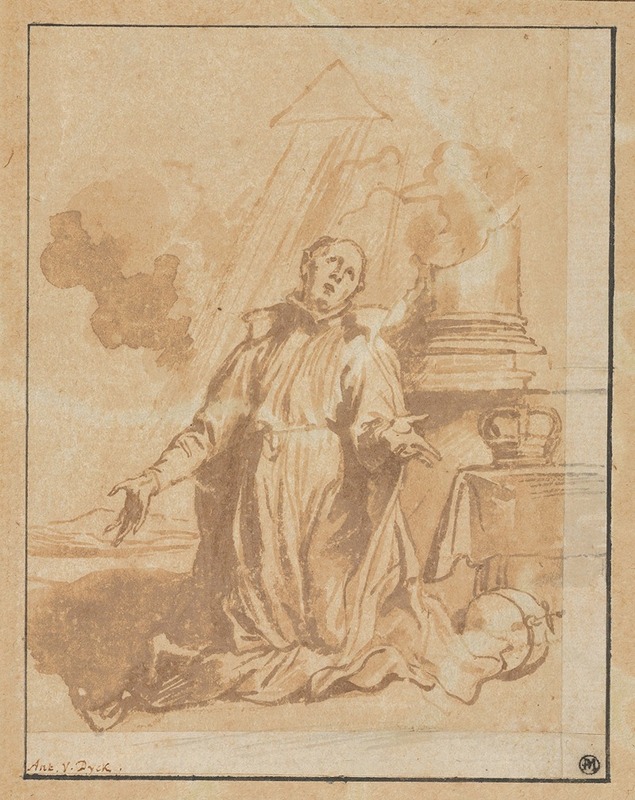
The Blessed Aloysius Gonzaga in Ecstasy
A hand-painted replica of Anthony van Dyck’s masterpiece The Blessed Aloysius Gonzaga in Ecstasy, meticulously crafted by professional artists to capture the true essence of the original. Each piece is created with museum-quality canvas and rare mineral pigments, carefully painted by experienced artists with delicate brushstrokes and rich, layered colors to perfectly recreate the texture of the original artwork. Unlike machine-printed reproductions, this hand-painted version brings the painting to life, infused with the artist’s emotions and skill in every stroke. Whether for personal collection or home decoration, it instantly elevates the artistic atmosphere of any space.
Anthony van Dyck's painting "The Blessed Aloysius Gonzaga in Ecstasy" is a notable work from the Baroque period, reflecting the artist's mastery in religious and portrait art. Anthony van Dyck, a Flemish Baroque artist, was renowned for his ability to capture the human form and emotion, and this painting is a testament to his skill and religious devotion.
Aloysius Gonzaga (1568–1591) was an Italian aristocrat who became a member of the Society of Jesus. He is venerated as a saint in the Catholic Church, known for his piety and dedication to the faith from a young age. Gonzaga renounced his noble heritage to join the Jesuits and devoted his life to caring for victims of the plague, which ultimately led to his own death at the age of 23. He was canonized in 1726, and his life and virtues have inspired numerous works of art.
Van Dyck's depiction of Aloysius Gonzaga captures the saint in a moment of spiritual ecstasy, a common theme in Baroque religious art, which sought to convey intense emotion and divine experiences. The painting likely portrays Gonzaga in a visionary state, emphasizing his spiritual connection and devotion. Van Dyck's use of light and shadow, a hallmark of Baroque art, enhances the ethereal quality of the scene, drawing the viewer's attention to the saint's serene expression and the divine light that seems to envelop him.
The composition of the painting is carefully constructed to focus on Gonzaga's spiritual experience. Van Dyck employs a dynamic yet balanced arrangement, guiding the viewer's eye towards the central figure of Gonzaga. The saint is often depicted in traditional Jesuit attire, which underscores his religious identity and commitment. The background and surrounding elements are typically subdued, ensuring that the focus remains on the saint's expression and the divine encounter.
Van Dyck's work is characterized by its emotional depth and technical precision. His ability to convey the inner life of his subjects through subtle facial expressions and gestures is evident in this painting. The artist's use of color and texture adds to the overall impact, creating a sense of immediacy and presence that invites contemplation and reverence.
"The Blessed Aloysius Gonzaga in Ecstasy" is a reflection of the Baroque era's fascination with religious themes and the exploration of spiritual experiences through art. Van Dyck, who was influenced by his contemporaries such as Peter Paul Rubens, brought his unique perspective and skill to this work, contributing to the rich tapestry of religious art from this period.
While specific details about the commission or the current location of this painting may not be widely documented, Van Dyck's religious works, including this depiction of Aloysius Gonzaga, continue to be celebrated for their artistic and spiritual significance. The painting serves as a visual homage to the saint's life and virtues, capturing the essence of his devotion and the transcendental nature of his faith.





